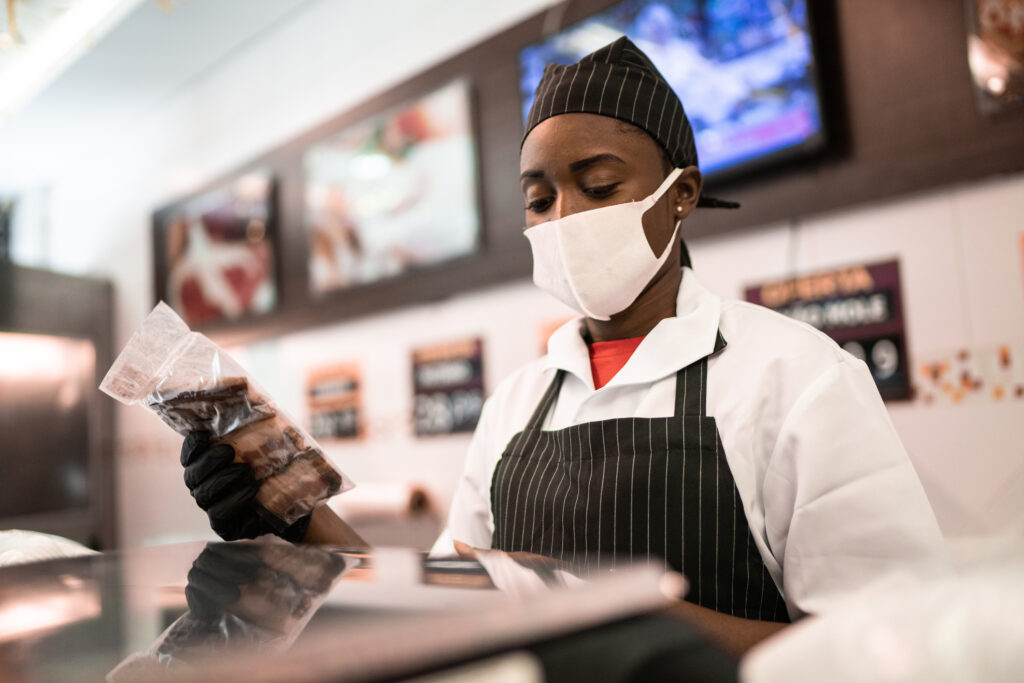
Black workers are more likely to work in essential jobs… or lose their jobs entirely.
The United States currently finds itself facing two monumental challenges at once: The massive public outcry over the murder of George Floyd, and the coronavirus pandemic, which has already claimed the lives of more than 112,000 Americans.
There’s been significant discussion about systemic racism since Floyd’s death, but new research from our friends at the Economic Policy Institute (EPI) illustrates how racism has also meant Black workers have been disproportionally impacted by the pandemic.
EPI’s Elise Gould and Valerie Wilson find that “racial disparities in health status, access to health care, wealth, employment, wages, housing, income, and poverty all contribute to greater susceptibility to the virus—both economically and physically.”
Black workers make up one in nine workers overall, about 11.9 percent of the workforce, EPI reports. But Black workers account for one in six “front-line-industry workers,” including 26 percent of public transit workers, 18.2 percent of trucking, warehouse, and postal service jobs, 19.3 percent of childcare and social service workers, and 14.2 percent of grocery, convenience, and drug store workers.
This has meant that Black workers aren’t able to work from their homes and must go into their workplaces, putting them at greater risk of contracting the virus. African Americans’ share of those who have died from the virus nationally is nearly double their share of the U.S. population.
But Black workers are also more likely to have lost their jobs because of COVID-19. While workers of all ethnicities have suffered major job losses since the shutdowns began in March, the unemployment rate is higher for Black workers: 16.7 percent compared to 14.2 percent for white workers.
Recent jobs data from the Labor Department shows that Black workers aren’t getting their jobs back as quickly as the rest of the population, either. While there’s still a long way to go before we reach full recovery, the economy did gain back 2.5 million jobs back in May.
Black workers, however, were largely left out of these gains.
Indeed, the racial disparities we are seeing currently mirror what happened when factory jobs were shipped overseas. As Gerald D. Taylor wrote in the 2016 report Unmade in America, Black workers disproportionally suffered because of deindustrialization and industrial flight.
As Unmade in America noted, manufacturing helped Black workers begin to build wealth and in some cases, even move into the middle class. While racism certainly didn’t go away, manufacturing helped to build vibrant Black communities in industrial cities like Baltimore, Detroit, St. Louis, and Youngstown, Ohio.
When factories began to close and jobs went overseas, all manufacturing workers suffered. But Black workers suffered the most.
As Taylor wrote: “black workers are disproportionately represented among the long-term (27+ weeks) unemployed. Making matters ever worse is the longstanding and well-documented wealth gap between black and white workers. Black Americans have historically lagged behind their white counterparts in several major wealth-building measures, such as household wealth, retirement savings, and homeownership. These facts suggest that black workers find it inordinately difficult to weather the storm brought on by prolonged economic distress.”
Black workers disproportionally bore the brunt of the pain when factories moved overseas, and now they are suffering the most during the coronavirus pandemic.
Here at the Alliance for American Manufacturing, we don’t pretend to have all the answers.
But as Taylor wrote back in 2016, action to create more good-paying, blue-collar jobs – things like investing in infrastructure and implementing a worker-friendly trade policy – will be one part of building a better future. And if we do things like implementing workforce training programs that target Black workers, we can take real, concrete steps to grow the Black middle class and begin to close the wealth gap.
Here's more from Taylor:
